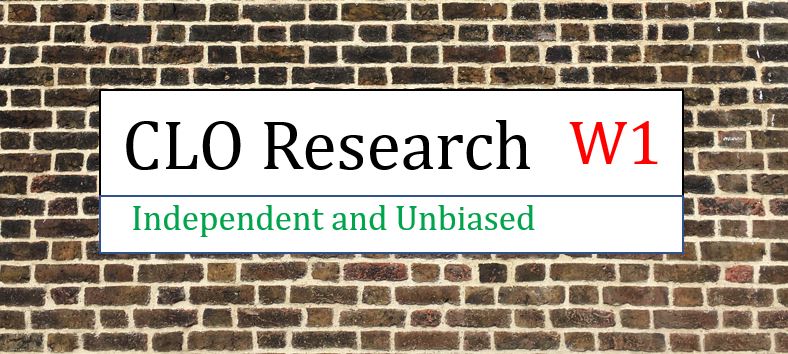Collateral spreads
The resilience of CLO-rated debt is well-publicised. This resilient performance is partly due to their long-term non-recourse capital structure – a valuable source of funding for the collateral pool. The long-term capital structure allows managers to navigate through longer-term market volatility.
From the equity standpoint, if the underlying collateral spreads improve while the cost of funding remains largely the same, then the improved excess spread could help mitigate credit losses due to trading or defaults. Then in the longer term, potentially give an extra boost to the final CLO equity IRR. That said, it seems that the volatility in 2022 has yet to translate into any meaningful improvement (if any) in collateral spreads – so this is not great for CLO equity investors. This also means that for a post-2012 CLO deal to deliver a decent equity IRR, the final NAV realisation would continue to play a key role. By comparison, 1.0 CLOs relied on high cash-on-cash distributions.
2023 is key for CLO managers to prove that the optionality embedded in the long-term non-recourse nature of the CLO capital structure is indeed valuable for CLO equity investors.
Impressive AUM growth
US CLO Managers such as Blackstone, Elmwood, Golub, PGIM, Ares, KKR, Palmer Square and Neuberger Berman grew their US CLO AUM organically by $3bn or more in 2022.
CLO AAA
Generally speaking, AAA pricing does not really reflect managers’ credit skills (as measured by total and MV investment return alpha).
Related articles:
Collateral Spread Change in 2022
(Featured) EU CLO Manager Scoring Based on Total Return (MV+Interest) Alpha
(Featured) US CLO Manager Scoring Based on MV Return Alpha
Some Reflections on the Drivers of 1.0 US CLO Equity Outperformance
Disclaimers
The information, research, data, research-related opinions, observations, and estimates contained in this document have been compiled or arrived at by CLO Research Group, based upon sources believed to be reliable and accurate, and in good faith, but in each case without further investigation. None of CLO Research Group or its service providers; authorised personnel, or their directors make any expressed or implied presentation or warranty, nor do any of such persons accept any responsibility or liability as to the accuracy, timeliness, completeness, or correctness of such sources and the information, research, data, research related opinions, observations and estimates contained in this document. All information, research, data, research-related opinions, observations, and estimates in this document are in draft form as of the date of this document and remain subject to change and amendment without notice. Neither CLO Research Group nor any of their third-party providers shall be subject to any damages or liability for any errors, omissions, incompleteness, or incorrectness of this document. This article is not and should not be construed as an offer, or a solicitation of an offer, to buy or sell securities and shall not be relied upon as a promise or representation regarding the historical or current position or performance of any of the deals or issues mentioned in it.





